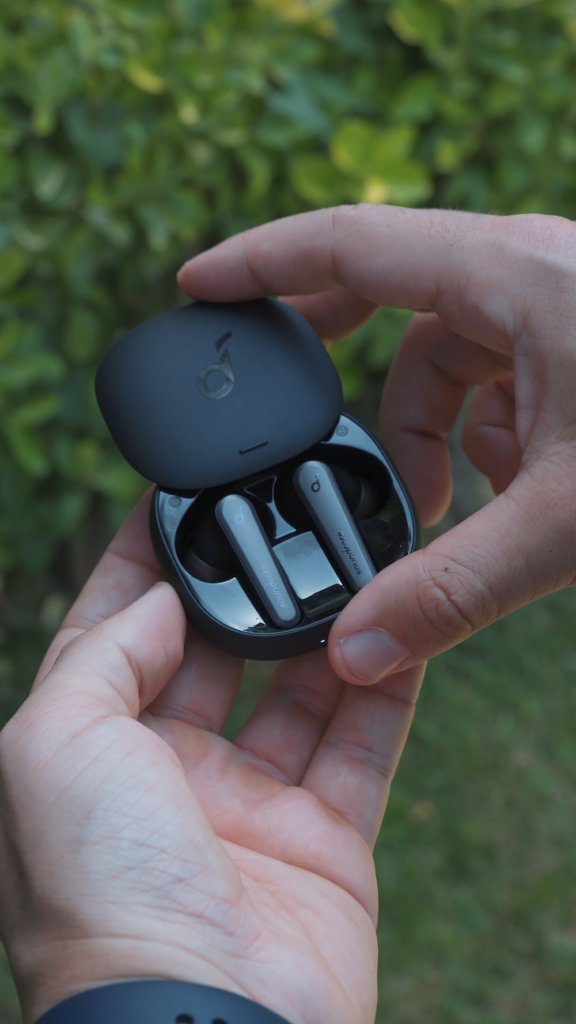As integral components of our Bluetooth earphones, microphones capture and transmit our voice during calls, video meetings, or voice commands. Yet, they often remain overlooked amidst the focus on sound output. Let’s delve into the fascinating world of Bluetooth earphone microphones, exploring their workings, types, and role in our daily lives, and take a peek at what the future might hold for these unsung heroes.
How Does Your Bluetooth Earphone Microphone Work?
The microphone in your Bluetooth earphone is a technical marvel designed to pick up your voice and convert it into an electrical signal for transmission. This process, known as transduction, involves various components that work together seamlessly, enabling us to communicate effectively. We’ll walk you through the stages of this intriguing process.
The Art of Transduction
The magic begins when you speak. The sound waves your voice generates enter the microphone, where they meet a diaphragm component. This diaphragm is designed to vibrate in response to these sound waves.
The vibrating diaphragm is linked to a coil that moves within a magnetic field, and as it moves, it generates an electrical current. This current is essentially an electrical copy of your voice’s sound waves. This process is known as electromagnetic transduction, and it’s the crucial step in converting your voice into an electrical signal.
Amplification and Conversion
The electrical signal created by the transduction process is often weak and needs to be amplified before it can be used. That’s where the microphone amplifier comes in. It boosts the signal to a level suitable for transmission.
This amplified signal is then converted from analog to digital signals. This conversion is crucial because Bluetooth technology transmits digital signals. The analog-to-digital conversion is carried out by a component known as an analog-to-digital converter (ADC).
Transmission
Once converted into a digital signal, the information can be transmitted via Bluetooth to the device on the other end of the call, be it a smartphone, a computer, or another Bluetooth-enabled device. This transmission happens over radio waves.
At the receiving end, the digital signal is converted back into an analog signal, amplified, and then played back as sound through speakers. Thus, the person on the other end hears your voice.
This process happens almost instantaneously, allowing for real-time conversation despite the complex series of conversions and transmissions. It’s a testament to the marvels of modern technology that such a complicated process is neatly tucked away inside your Bluetooth earphones, making your daily communications smooth and effortless.
Types of Microphones in Bluetooth Earphones
Microphones in Bluetooth earphones come in different forms, each with its strengths and limitations. The most common types include omnidirectional, bidirectional, and noise-canceling microphones. This section will give you an overview of each type and its potential applications, helping you make an informed choice for your next Bluetooth earphone purchase.
Omnidirectional Microphones: Catching It All
As the name suggests, omnidirectional microphones can pick up sound equally from all directions. This type of microphone is versatile and can capture a more natural sound by picking up surrounding ambient noise. However, this can also be a drawback if you’re in a noisy environment, as the microphone may pick up unwanted background noise.
Bidirectional Microphones: The Two-Way Street
Bidirectional microphones pick up sound from two opposite directions – front and back. They’re beneficial in specific situations, such as one-on-one interviews, where sound needs to be captured from both the speaker and the listener. However, they’re not commonly found in Bluetooth earphones due to their specific use cases.
Noise-Canceling Microphones: Cutting Through the Clutter
Noise-canceling microphones are specially designed to minimize background noise, providing clearer sound during calls. They work by using one or more secondary microphones to capture ambient noise. The earphones then generate a counter signal to cancel out this noise. This is particularly beneficial in noisy environments like busy streets or airports.
MEMS Microphones: Small but Mighty
Another type found in many Bluetooth earphones is the MEMS (Micro-Electro-Mechanical Systems) microphone. These tiny devices are known for their durability, reliability, and resistance to temperature and humidity changes. Despite their small size, they offer excellent sound quality and are particularly suited to the compact form factor of Bluetooth earphones.
The Future of Microphones in Bluetooth Earphones
As technology continues to evolve, so do the capabilities of microphones in Bluetooth earphones. From advancements in noise-canceling technology to the integration of AI, the future holds exciting possibilities for these tiny devices. We’ll explore potential trends and innovations that are set to shape the next generation of Bluetooth earphone microphones.
Next-Level Noise Cancellation
Noise-canceling technology is continually improving, and we can expect to see these advancements reflected in Bluetooth earphone microphones. Future devices could employ smarter noise cancellation, which adapts to specific environmental sounds, offering more precise background noise reduction and, thus, clearer call quality.
Artificial Intelligence and Machine Learning
Integrating artificial intelligence (AI) and machine learning will likely play a significant role in the evolution of Bluetooth earphone microphones. AI could help tailor noise cancellation to individual user preferences or environmental factors. Machine learning algorithms could be used to enhance voice clarity, distinguishing the user’s voice from ambient sounds more effectively.
Beamforming Microphones
Beamforming is a technique used in some high-end Bluetooth earphones already, but we expect to see this more in the future. Beamforming uses multiple microphones to focus the pickup pattern toward the user’s mouth, enhancing the clarity of voice calls and reducing background noise.
Innovative Materials
The future might see novel materials used in the diaphragm of microphones, allowing for even smaller, more efficient devices without compromising sound quality. These materials could be more resilient and adaptable, contributing to the longevity and performance of the microphones.
Integration with Other Sensors
We can anticipate the further integration of microphones with other sensors in Bluetooth earphones, like accelerometers or heart rate monitors. This could help improve the performance of voice assistants or even provide novel functionalities, such as voice stress analysis during fitness activities.
Final Thoughts
In conclusion, the microphone nestled within your Bluetooth earphone is a powerful tool, making effective communication possible at the click of a button. By understanding its inner workings, types, applications, and future trends, we can truly appreciate its pivotal role in our digital lives and look forward to future exciting innovations.


